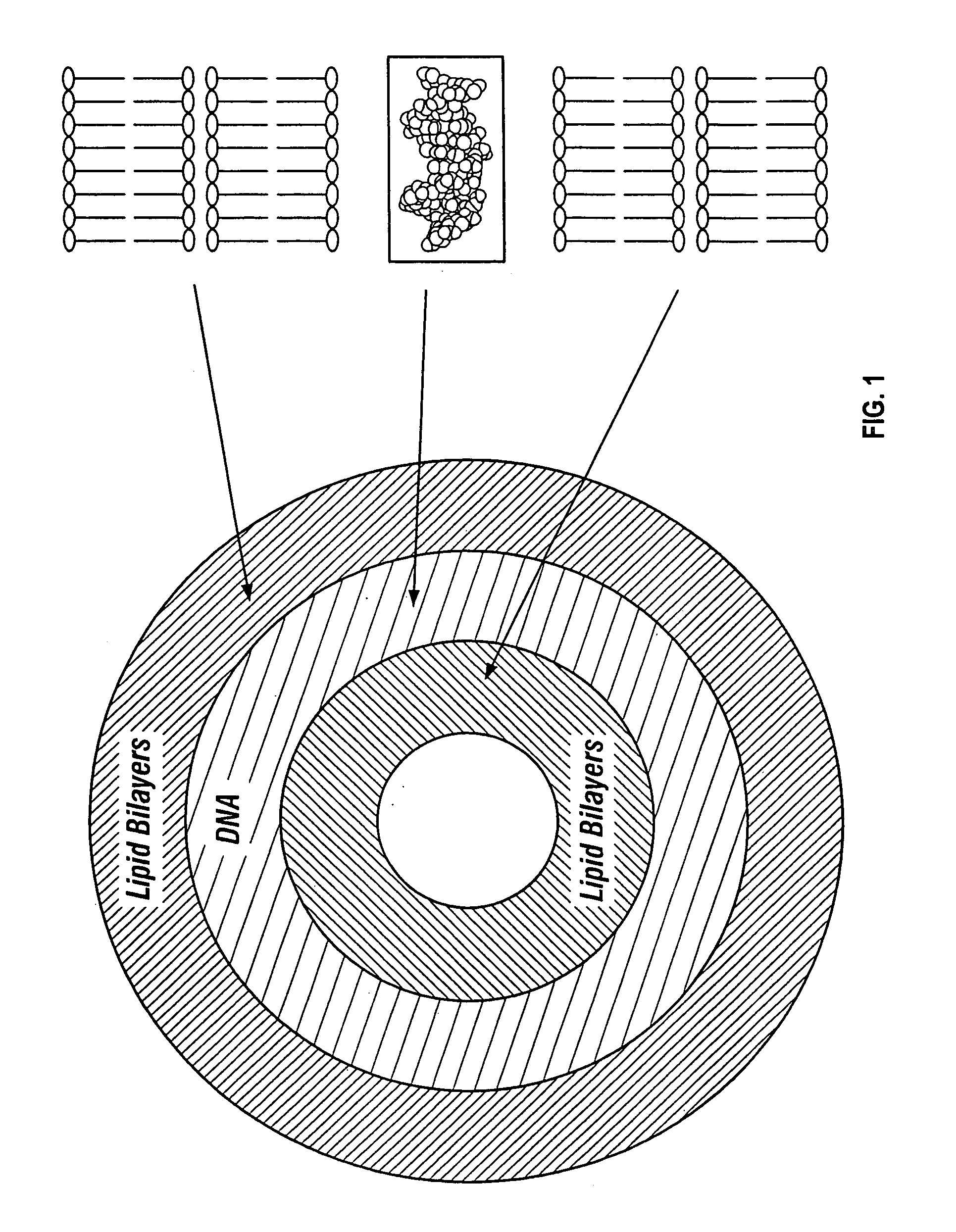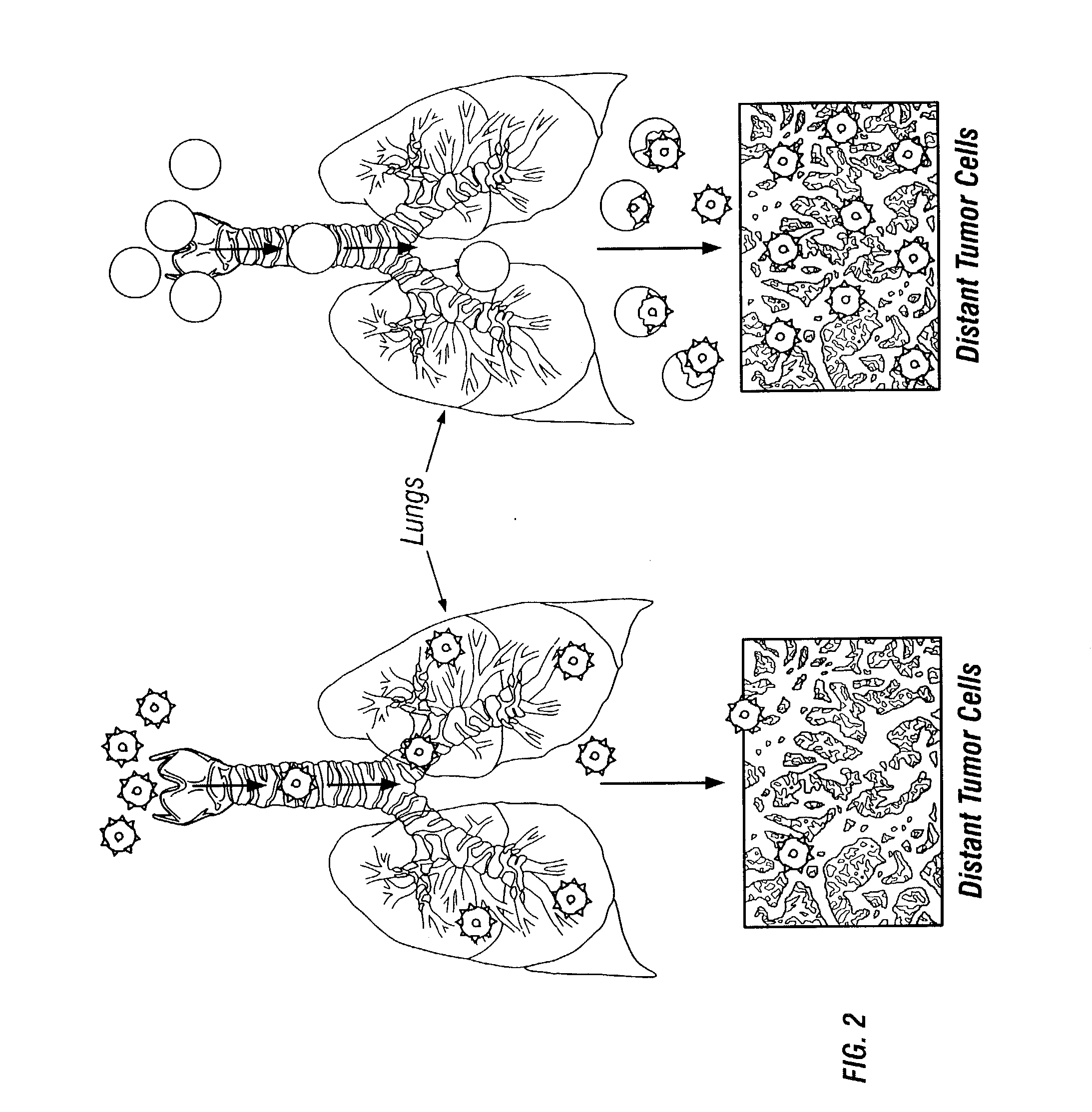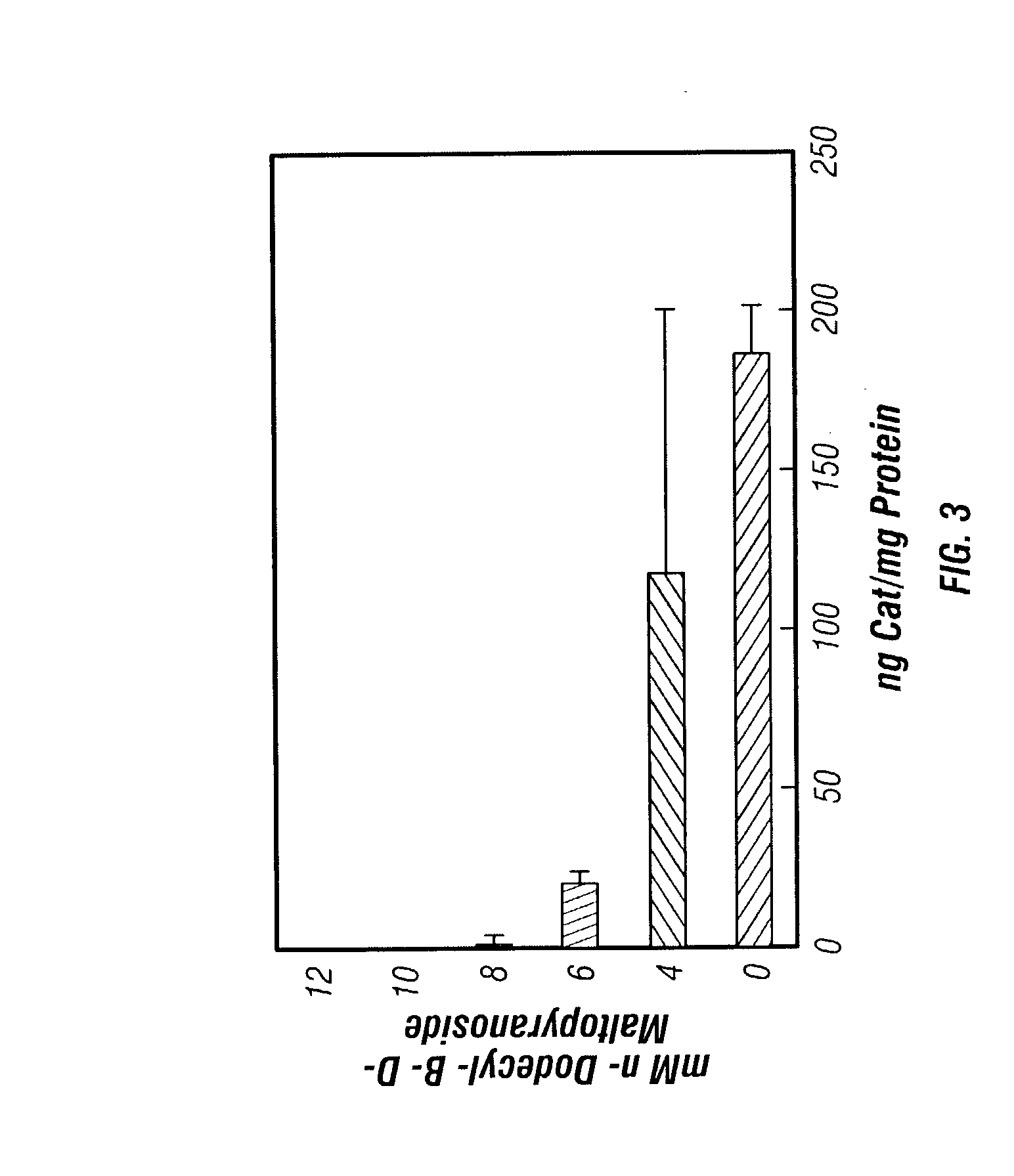Reversible masking of liposomal complexes for targeted delivery
a liposomal complex and liposomal complex technology, applied in the field of targeted delivery of liposomal complexes, can solve the problems of high cost of producing large amounts of high-titer viral stocks for clinical trials, inability to administer certain viral vectors more than once, and limited nucleic acid size that can be packaged in viral vectors
- Summary
- Abstract
- Description
- Claims
- Application Information
AI Technical Summary
Benefits of technology
Problems solved by technology
Method used
Image
Examples
example 1
Preparation of DNA:Liposomal Complexes
[0068]Preparation of Liposomes. BIV liposomes, specifically DOTAP: Chol liposomes, were used in the experimental protocols described below. The DOTAP: Chol liposomes were prepared as follows. The cationic lipid (e.g., DOTAP) was mixed with the neutral lipid cholesterol (Chol) at equimolar concentrations. Recently, synthetic cholesterol has been used to make clinical grade liposomal complexes. The optimal ration of DOTAP to synthetic cholesterol is 50:45, rather than 50:50. The mixed powdered lipids were dissolved in HPLC-grade chloroform. After the clear solution was rotated at 30° C. for 30 minutes to make a thin film, the film was dried under vacuum for 15 minutes. The film was hydrated in 5% dextrose in water to give a final concentration of 20 mM DOTAP and 20 mM Chol (or 18 mM for synthetic cholesterol), referred to as 20 mM DOTAP: Chol. The hydrated lipid film was rotated in a water bath at 50° C. for 45 minutes and then at 35° C. for 10 mi...
example 2
Identifying Potential Masking Agents
[0072]Masking agents will be neutral lipophilic compounds that will have an affinity for the liposomal lipid bilayers, or the masking agents will be weak anionic compounds that form ionic bonds with the cationic liposome. Once a potential masking agent has been selected, expensive time-consuming in vivo experiments must be performed to verify that the masked liposome by-passes the lungs and other non-target tissues and is delivered to and expressed in target tissues. Typically, the liposomal complex is titrated with varying concentrations of the selected masking agent to determine the optimal concentration of the masking agent that will provide optimal delivery of the masked liposomal complex to the targeted tissue in an animal model. The time and expense of such in vivo experiments generally dictate that preliminary in vitro tests be performed to select potential masking agents worthy of further pursuit.
[0073]Such preliminary in vitro tests inclu...
example 3
Adding Ligand to the DNA:Liposomal Complex
[0077]Once a potential masking agent is identified and ready to be tested in vivo, a ligand needs to be added to the DNA:liposomal complexes that will specifically bind to a particular cell type or tissue of interest. In the present example, succinylated asialofetuin was used to target delivery of the DNA:liposomal complexes to the asialoglycoprotein receptor on liver hepatocytes (Kaneo et al. 1991). The succinic acid amides increase the negative charge of the asialofetuin, and therefore, bound to the surface of liposomal complexes more efficiently than asialofetuin alone. The succinylated asialofetuin is bound to the liposomal complex surface via electrostatic interaction.
[0078]The DNA-liposomal complexes were filtered through a 0.45 μm polysulfone filter (Whatman) after mixing. Succinylated asialofetuin (0.2 mg / ml) was added to these filtered DNA:liposomal complexes using a Pipetman pipet tip. This mixture was mixed slowly up and down twic...
PUM
| Property | Measurement | Unit |
|---|---|---|
| Mass | aaaaa | aaaaa |
| Mass | aaaaa | aaaaa |
| Molar density | aaaaa | aaaaa |
Abstract
Description
Claims
Application Information
 Login to View More
Login to View More - R&D
- Intellectual Property
- Life Sciences
- Materials
- Tech Scout
- Unparalleled Data Quality
- Higher Quality Content
- 60% Fewer Hallucinations
Browse by: Latest US Patents, China's latest patents, Technical Efficacy Thesaurus, Application Domain, Technology Topic, Popular Technical Reports.
© 2025 PatSnap. All rights reserved.Legal|Privacy policy|Modern Slavery Act Transparency Statement|Sitemap|About US| Contact US: help@patsnap.com



